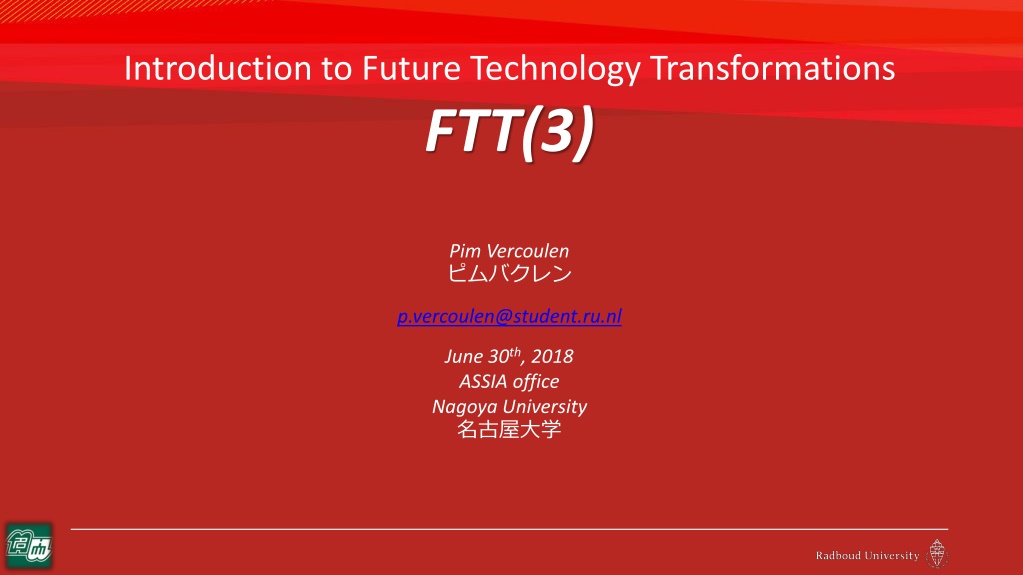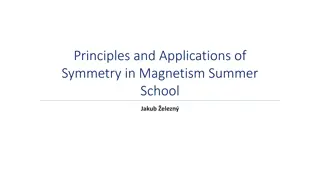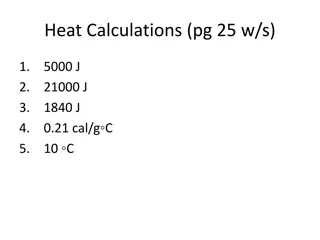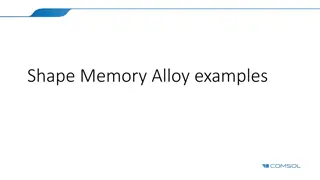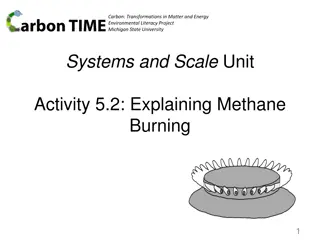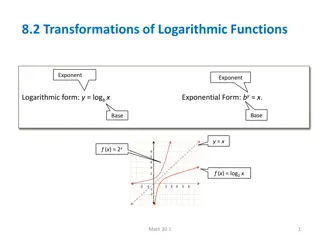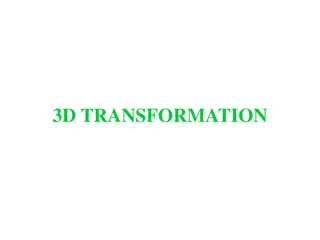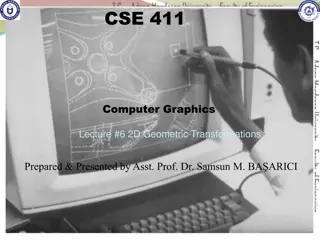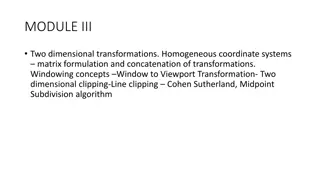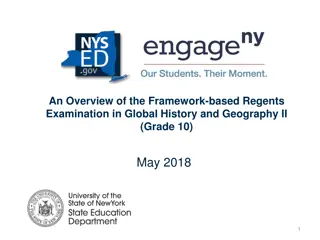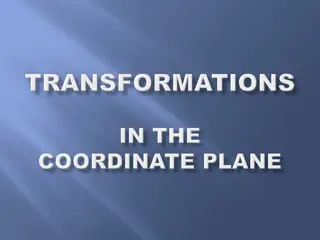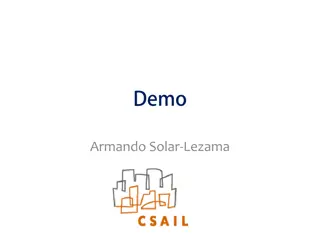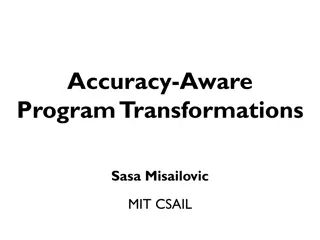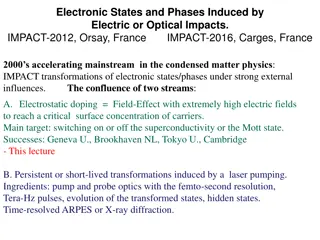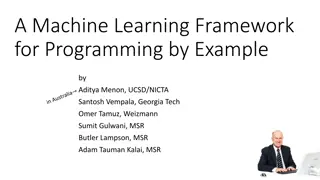Exploring Future Technology Transformations Framework
The Future Technology Transformations (FTT) framework, developed by Jean-François Mercure, focuses on key sectors like power, transport, heat, steel, agriculture, and cement to address climate change. Based on innovation economics and Schumpeterian principles, FTT emphasizes the widespread deployment of low-carbon technologies for a sustainable future. The methodology includes levelized cost calculations and preference matrices to guide investment decisions in new technologies.
Download Presentation

Please find below an Image/Link to download the presentation.
The content on the website is provided AS IS for your information and personal use only. It may not be sold, licensed, or shared on other websites without obtaining consent from the author. Download presentation by click this link. If you encounter any issues during the download, it is possible that the publisher has removed the file from their server.
E N D
Presentation Transcript
Introduction to Future Technology Transformations FTT(3) Pim Vercoulen p.vercoulen@student.ru.nl June 30th, 2018 ASSIA office Nagoya University
Background Framework developed by Jean-Fran ois Mercure (currently professor at Radboud University, Nijmegen, The Netherlands). FTT:Power (2012, Jean-Fran ois Mercure) FTT:Transport (2015, Aileen Lam) FTT:Heat (2017, Florian Knobloch) FTT:Steel (~2018, Lorena van Duuren & Pim Vercoulen) FTT:Agriculture (~2018, S ren Linder) FTT:Cement (t.b.a.) Together these sectors account for the majority of all emissions! 2018 6 30 2
Innovation economics Global Energy Assessment Ch1 Energy Primer p113 (2012) FTT framework is based on innovation economics (=Schumpeter economics) Learning rate S-curve Why innovation economics: Firstly, it is the application of technology that has caused the anthropogenic contribution to climate change in the historical context; both coal and oil were part of processes of transformations of economies and societies. Understanding the history of technology then helps us to direct the course of future technical change. Secondly, a change to a low carbon society will require widespread development and mass deployment of new, low carbon technologies (K hler, et al. 2006) The bottom-up schumpeter approach works well with the top-down post-Keynesian approach Nakicenovic, Technology Forecasting and Social Change (1986) E.M. Rogers, Diffusion of Innovations, Fifth Edition p281 (2010) 2018 6 30 3
General FTT Methodology Levelized Cost Price of commodity based on Levelised Cost calculation ? ?? ? + ?? ? + ?? ? + ??2? ? + 1 + ?? ???????????= 0 ?? ? ??????????(?) 1+?? 1 ? ?????????= 0 = ? 0 1+?? ??? ? + ?? ? + ?? ? + ??2? ? + 1 + ?? 0 ????? ????:??????????? = = 1 1 ????????? ? ? 0 1 + ?? Costs are not perfectly defined since there are regional variances that can affect the costs as experienced by the investor ??? ? +?? ? +?? ? +??2? ? + 1+?? 0 1+?? 0 ?? ? = ? = 1 ? 2 ?????? + ????2+ ????2+ ? 0 1 + ?? 1 1 + ?? sdLC = ? 0 2018 6 30 4
General FTT Methodology Preference Matrix Preference matrix Probility of an investor chosing for technology i or j Standard deviation of preference (dFij) 2 2 ????? ????= 2 ????? Preference FA->B 2 ????? ????? ????? F? ?=1 2+1 2 ? ? 2 ?? ?= 1 ?? ? 2018 6 30 5
General FTT Methodology Share changes As a result of the LC, we get investor preferences (Fij), and as a result of investor preferences we get market share changes ( Si->j) Technological Lock-in Cost-based preference of investors ?? ??? ?? ??? ?? ??? ?? ??? S? ? F?? t F?? t S? ?= ??= ???? F??A?? F??A?? t S? ? ? ? Constraint of substitution rate S? ?= ??= ???? F??A?? F??A?? t ? ? ? A??= ??? ??? 2018 6 30 6
FTT:Steel Scrap Availability Scrap availability is proportional to steel stocks within different sectors but steel becomes available as scrap after the EOL and different sectors use different steel qualities and coatings which could render it unsuitable as steel scrap 2018 6 30 7
FTT:Steel Variable material input Input-Output ! Identity matrix IO-table Final demand vector 1 ?11 ??1 ?1? ??? 1 0 0 1 1 0 ????????? = 2018 6 30 8
Coal quality can affect the amount of coal and coke consumed Iron ore quality (i.e. iron content) affects the amount of iron ore consumed Scrap is usually co-melted for quality insurance and to suppress costs but scrap is not always available but scrap quality can vary (even to the point where it is rendered useless How does FTT:Steel calculate material consumption for each time iteration? 2018 6 30 9
Steelmaking Ironmaking technology technoloy Intermediate plants (coke plant, sinter plant, pellet plant) Raw materials Natural Gas Limestone Electricity Hydrogen Biomass Iron ore Pellets Sinter Scrap Steel Coke Coal Iron Steel Iron Coke Sinter Pellets Scrap Coal Natural Gas Electricity Iron ore Limestone Hydrogen Biomass 2018 6 30 10
Integrated Iron and Steelmaking routes 2018 6 30 11
FTT:Steel 26 technologies Integrated route Ironmaking Steelmaking Variations Conventional Blast Furnace + Open Hearth Furnace = Conv. BF OHF Only fossil Fossil Biomass Carbon Capture and Storage (CCS) Biomass + CCS Conventional Blast Furnace + Basic Oxygen Furnace = Conv. BF BOF CCS Biomass + CCS Blast Furnace Top Gas Recovery + Basic Oxygen Furnace = BF TGR BOF Fossil Biomass CCS Biomass + CCS Electric Arc Furnace Gas-based Direct Reduction + = DRI-gas EAF Fossil Biomass CCS Biomass + CCS Electric Arc Furnace Coal-based Direct Reduction + = DRI-coal EAF Fossil Biomass CCS Biomass + CCS Smelt Reduction + Basic Oxygen Furnace = SRI BOF Fossil Biomass CCS Biomass + CCS Advanced Smelt Reduction + Basic Oxygen Furnace = SRI+ - BOF Hydrogen Flash Smelt + Electric Arc Furnace = HFS EAF No variations - + Molten Oxide Electrolysis = MOE No variations - + Electric Arc Furnace = Scrap EAF No variations 2018 6 30 12
FTT:Steel Data acquisition (work-in-progress) Historical steel production is recorded by the World Steel Association (~1970-2017) but does not contain the resolution needed for this study Historical emissions from the iron and steel industry are recorded by the Joint Research Centre of the European Commission (EC-JRC) (1970-2012) but only total emissions and not on technology-specific level Material use was gathered from multiple sources and these show great variations In different regions different material qualities are available E.g. in Chinese reserves of iron ore and coal are usually of lower quality and therefore consume greater quantities Material use over time changed, i.e. efficiency increased but no good source of historical material use was found 2018 6 30 13
FTT:Steel Data acquisition (work-in-progress) Technology specific cost aspects varied accross sources Investment costs of existing technologies were mainly obtained from IEA-ETSAP and IETD-IIP Not on a regional basis due to limitation of sources and due to the assumption that it would vary little among countries since only a few engineering companies are available of steel plant construction Operation and maintenance was made variable along with material consumption Technological specifications of novel technologies Based on scientific papers that serve as a proof of concept of technology, but how are costs estimated? 2018 6 30 14
FTT-E3ME feedbacks Post-Schumpeterian (evolutionary) FTT Fuel/Material consumption Investment in new production technology product price product demand Fuel/Material demand E3ME Post-Keynesian 2018 6 30 15
FTT:Steel Overall structure after coupling to E3ME 2018 6 30 16
